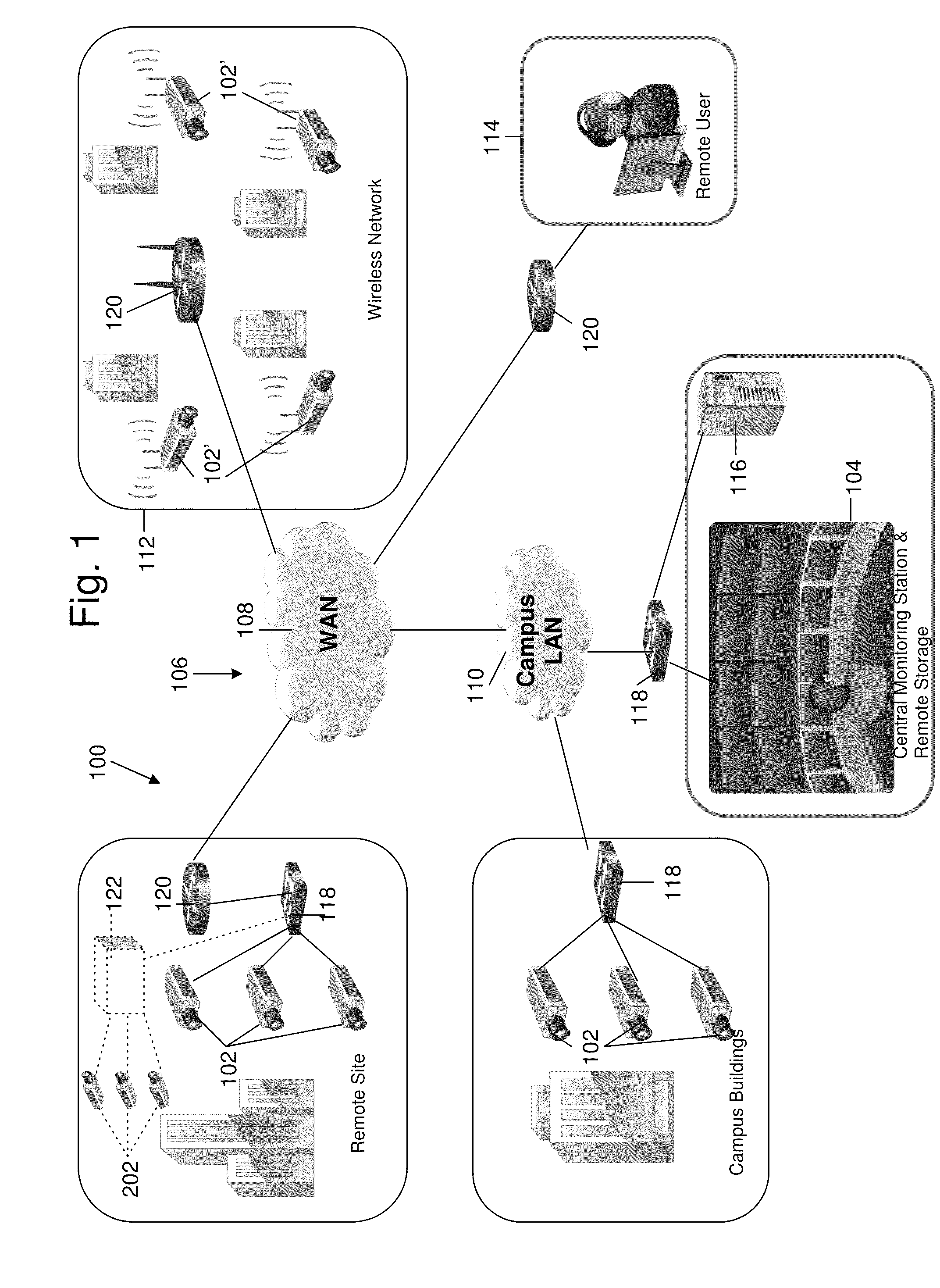Video camera having relational video database with analytics-produced metadata
a video camera and metadata technology, applied in the field of video imaging system, can solve the problems of large amount of bandwidth and storage capacity, large amount of data produced by network cameras, and complex camera networks, and achieve the effect of eliminating the majority of network bandwidth requirements
- Summary
- Abstract
- Description
- Claims
- Application Information
AI Technical Summary
Benefits of technology
Problems solved by technology
Method used
Image
Examples
first embodiment
[0025]A first embodiment of network camera 102 is described in more detail with reference to FIG. 3. Video processing system 204 includes a rules based engine 302, video analytics 304, and a storage management system 306, some or all of which may be implemented in software. Video analytics 304 includes video analytics software operating in a video analytics processor. Although video analysis and other video processing described in the following embodiments are performed by video processing system 204, video data may also be supplied from network camera 102 to a network-connected video processor, such as a video server (not shown), that performs all or part of the video analysis and other video processing described below. In other words, video analysis and processing may be distributed throughout network camera system 100. Video processing system 204 may also include video encryption capabilities to prevent unauthorized viewing of video information. Imaging system 202 captures a fiel...
PUM
 Login to View More
Login to View More Abstract
Description
Claims
Application Information
 Login to View More
Login to View More - R&D
- Intellectual Property
- Life Sciences
- Materials
- Tech Scout
- Unparalleled Data Quality
- Higher Quality Content
- 60% Fewer Hallucinations
Browse by: Latest US Patents, China's latest patents, Technical Efficacy Thesaurus, Application Domain, Technology Topic, Popular Technical Reports.
© 2025 PatSnap. All rights reserved.Legal|Privacy policy|Modern Slavery Act Transparency Statement|Sitemap|About US| Contact US: help@patsnap.com



